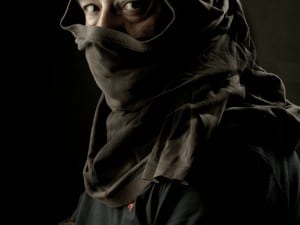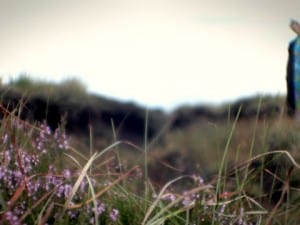Disappearing buildings, a pink ceiling and a laminated sexual enhancement pill wrapper keep each other company in a punny but divided show organised with Aaron Gemmill. The artist framed O / U as a dialogue on exchanges: over-under hints at the “political and strategic connotations” of “two prepositions that exist in a dialectic.” The first level of juxtaposition comes from the gallery setup: O / U exists at both P! on Broome Street and ROOM EAST on Orchard, a few minutes’ walk away if the crosswalk signals are in your favour. Though the rationale for this specific division of works is not always clear— some pieces are grouped thematically while other series are split between the spaces — the works echo each other in amusing and sometimes surprising ways.
From the street, P! feels inviting. A warm glow of pink emanates from the space. Achieving this effect was a joint effort. Matthew Schrader painted the walls (Pink Walls, 2016) whilst Julie Ault and Martin Beck painted the ceiling (Pink Ceiling, 2005-2015). As is clear from the dates, Ault and Beck were there first, and their piece was not made with this show in mind. In contrast, the undated black and white ceiling piece at ROOM EAST, Possession of Authority by Lars Breuer, is undated and could have been made for the show. Schrader and Breuer’s paintings are then interesting due to their amplification of existing gestures. After noticing the ceiling, one naturally looks at the floor. Aaron Gemmill’s Camera drawing 2016 (2016) is a series of nested quadrangles routed in the floor so that they appear to be telescoping, just as a camera lens turns to extend and focus on a subject. The subject to focus on here is the gallery, and that sentiment is echoed by Patrick Ireland, whose Borromini’s Underpass (1980) honors the Italian architect with a clean, geometric diagram for a sculpture scaled to the gallery, made of series of ropes sloping from walls to floor to form the shape of a boat’s hull. Through these four pieces, the space of the gallery is fully denoted as a container.
The walls, floor, and ceiling are also surfaces, which Jessica Dickinson calls to attention with remainder: Are: Here (Final) (2016), a graphite rubbing on paper. Though the drawing is hung vertically, the rubbing seems to have been made from a horizontal surface such as a tiled floor. This reorientation is successful in literally navigating the sort of over / under relationship Gemmill was likely after; a parallel piece hung at ROOM EAST ties the two spaces together.
More nuanced works in the show at P! include Zoe Leonard’s January 23, Frame 8 (2011) and Matthew Schrader’s Untitled, (2014). The former is an atmospheric Gelatin silver print capturing the diffused light of a winter day. A quarter-sized pinpoint of light is surrounded by a stippled gradient of heat. It is only recognisable as a landscape because of the fine blades of grass poking up from the bottom of the frame. The latter work more actively captures sunlight. Made of magnetic viewing film and neodymium magnets, the diamond-shaped panel is of a deep emerald color that slowly reacts to magnetic radiation. As it fluctuates, this is the most dynamic piece of the show.
Several other works in both spaces speak to more bodily and comic interpretations of the theme. At P!, Kate Levant’s Untitled [enhancement] (2016) highlights the ups and downs of sexual prowess via a shiny laminated enhancement pill wrapper whose only visible text reads, “Performance.” At ROOM EAST, Levant’s Untitled (2014) inkjet print depicts a snake swallowing an entire egg from a nest. The snake’s jaws must have detached in order to swallow, and one can imagine the lump visibly travelling through its slippery body. Also lumpy are the bodies in Ebecho Muslimova’s ink drawings on paper. Fatebe Brick Holder (2015) shows a woman who supports a tower of bricks by sticking them between her legs, supported by rolls of fat.
In Fatebe Slides (2016), the same woman (presumably) stuffs her plump body into two human-sized sandals, one for her legs and one for her arms. Her hands and feet are each stuffed into four additional, appropriately sized slides, but her gleeful smile suggests she is enjoying this corporeal challenge. Barbara Bloom captured other amusing contortions with Berlin Street Corner (1989) back at P!: one woman of average height bends slightly to address a much smaller, older, and hunched over woman with a poof of grey hair. Their differences in the print are exaggerated by the split colors of the custom matte.
Muslimova’s brick stacks relate directly to Miles Huston’s A Fallow Field (2016), a tower of eleven produce boxes reaching from floor to ceiling, touching both so that the stack could be imagined to extend above and below the ceiling and floor at ROOM EAST. This gesture has, of course, been tried before (see, for example, Constantina Zavitsanos’s tower of debt documents), but the Eight Mile Creek Farm boxes here sport a sticker of a friendly farmer carrying items herself; the visual doubling and familiarity with such boxes hint nicely at tactility.
Also bodily and quite interesting is Steven Holl’s Tesseracts of Time (2016), an archival print on cotton rag that reads as a drawing. The top half is a sort of Trisha Brown dance diagram and the bottom could have been the basis for Susan Marshall’s Chromatic piece at The Kitchen. This piece could also very likely have been the starting point for the show, as it literally depicts how bodies could interact with architecture: under, in, on, and over. The tesseracts drawn on the bottom half are slightly larger than a human. They are meant to start out on the ground as black and white sculptures but later be raised to “catch [the] gold of [the] rising sun” (linking the piece to Leonard’s photograph). Holl also intended to have dancers wear asymmetrical costumes in primary colors with green while they responded to “music patterns in a chromatic field.” This is where Marshall could have come in—her piece wove Josef Albers’ color theory into a frenzied lecture-come-dance-come-musical performance.
Relating more directly to architecture are Marc Handelman’s oil paintings on inkjet prints, another series that is split between the two spaces. Untitled (2016) at P! seems most successful of the three on display, but all works attempt to make architecture disappear into the sky by extending the pattern of the sky with paint over the top of the building. In the piece at P!, the building’s outline is still somewhat visible as one can see where the paint ends, and this level of difference is most interesting. The prints seem to be of architectural building mockups rather than photographs of existing buildings, and could conceivably be a sort of sociopolitical protest of gentrification in line with Gemmill’s stated interests.
Several of the remaining works in the show respond to over-under with formal concerns. In Karel Martens’ Untitled (circa 2008) letterpress on paper, a pink doughnut form interacts with a yellow rectangle. The rectangle’s outer edge is tangential to the doughnut’s outer edge while the rectangle’s inner edge is tangential to the doughnut hole. The effect is that the rectangle seems to emerge out of, or unravel from, the loop. Because the shapes’ shared area is of a mixed color, it is unclear which shape is on top.
Last to be unraveled are the two rolls of toilet paper facing the street at ROOM EAST. This installation by Aki Sasamoto presents the most quotidian explanation of the show with an accordingly accurate title (Under/Over, 2015). Though both toilet paper holders are hung on the same wall at the same height, one roll faces the wall while the other hangs toward the viewer. Most would agree that one roll should be switched. More difficult to decide: which one, and why does this flip feel most pressing of all?
O—U at P! and Room East ran from 15 JULY–20 AUGUST, New York.
Mira Dayal
Credits:
1. Installation views of O / U at P! and Room East. Courtesy of Sebastian Bach.





